Case Report: 21CA003
Farm Laborer Died When Struck by a Tomato Harvester
Download a PDF to print this report: Farm Laborer Died When Struck by a Tomato Harvester (21CA003, PDF, 3MB)
Summary
On August 19, 2021, a 21-year-old Hispanic male farm laborer was working on the platform of a tomato harvesting machine as a “sorter.” This job required that he remove damaged tomatoes and debris from a moving conveyer prior to the tomatoes being transferred to a trailer alongside of the harvester. Periodically during the shift, the operator of the harvester would stop, and the sorters would climb underneath the machine to clear debris from the conveyors.
Near the end of the night shift, the harvester operator instructed the crew to stop working and return to the maintenance facility to clean the machine. Upon arriving at the maintenance facility, they noticed that the victim was missing. Driving back to the field where the victim was last seen, the operator found his body, apparently crushed by the tomato harvester. Emergency services were called to the scene but were unable to revive him and he died from his injuries.
Introduction
On August 19, 2021, a 21-year-old Hispanic male farm laborer died after being struck and run over by a tomato harvesting machine. The CA/FACE investigator received notification of this incident on August 26, 2021, from the Cal/OSHA Weekly Fatality Report. On April 8, 2022, the CA/FACE investigator interviewed the victim’s employer (labor contractor) and the Cal/OSHA enforcement officer who conducted the initial site investigation the morning of the incident. Multiple attempts to interview co-workers were unsuccessful. The investigation also included a review of the service manual for the tomato harvester; incident scene photographs provided by the labor contractor; and reports from Cal/OSHA, the sheriff’s department, and the county coroner.
Employer
This was a multi-employer workplace subject to Cal/OSHA’s “Determination of Citable Employer” requirements and Federal OSHA’s “Multiemployer Citation Policy. ”
-
The employer of the deceased was an agricultural labor contractor that had approximately 400 employees. The company had been in business since 2017 and had three employees onsite the day of the incident.
-
The farmer who hired the labor contractor had about 20 employees. He had been in business for five years and had two employees onsite the day of the incident.
Written Safety Programs and Training
At the time of the incident, the labor contractor had an Injury Illness Prevention Program (IIPP), which is required for all businesses in California. The written IIPP addressed employee safety by identifying individuals in the company who were responsible for maintaining the safety program, conducting regular workplace inspections to identify workplace hazards, providing health and safety training to employees prior to assignment or as hazards are identified, correcting identified hazards, investigating accidents, and maintaining records of the aforementioned. In addition to IIPP requirements, the labor contractor’s employees were also trained in heat illness prevention, ladder safety, chemical (pesticide) handling, lifting/back injury prevention, tool safety, and agricultural tractor safety. There was no written or formal training for working on or around the tomato harvester. The labor contractor provided health and safety training to all employees on the first day of employment, and additional training whenever they were assigned to work with new equipment or processes. The training was provided in Spanish.
Worker Information
The victim was a 21-year-old Hispanic male farm laborer who was working as a sorter for the labor contractor. He was born in Mexico and his first language was Spanish, but he could speak some English. This was the victim’s first shift as a sorter, and he had no prior experience working on or around tomato harvesters. The workers’ shifts varied based on the time of year and the specific crops being harvested. On the day of the incident, the victim began his shift at 6 p.m. and was expected to end at 5 a.m.
Equipment
The primary piece of equipment involved with this incident was a Westside Equipment Company Commander tomato harvester (Exhibits 1–3). The tomato harvester was a tractor-based piece of agricultural equipment that was approximately 37 ft. long x 12 ft. wide x 11 ft. high and weighed about 32,000 pounds (16 tons). It operated by lifting and slicing tomato vines onto a conveyor that fed the tomatoes and vines through a series of blades, conveyers, shakers, and air pressure. The tomatoes were separated from the vines and crossed a worker-attended sorting station before being conveyed overhead to an open-top trailer pulled alongside the harvester by a tractor (Exhibit 2). The tomato plant vines and leaves, once separated from the fruit, were ejected as mulch from the rear of the harvester. The harvester was driven by an operator in an enclosed cab at the front of the machine. It had platforms on both sides where workers (known as sorters) stood to manually remove any residual debris, vines, or unripe/damaged tomatoes from the conveyor prior to the tomatoes being transferred to the trailer (Exhibit 4). During operation, the harvester was very noisy, making communication between the sorters and the operator difficult. It also could possibly generate a large amount of dust, depending on the conditions in the field at the time of harvesting.
The windshield on the operator cab did not have windshield wipers or a spray washer system (similar to automobiles), or side mirrors that would allow the driver to see the platforms. There was a significant blind spot on the operator’s left side due to the pick-up section conveyer (known as the header chain).
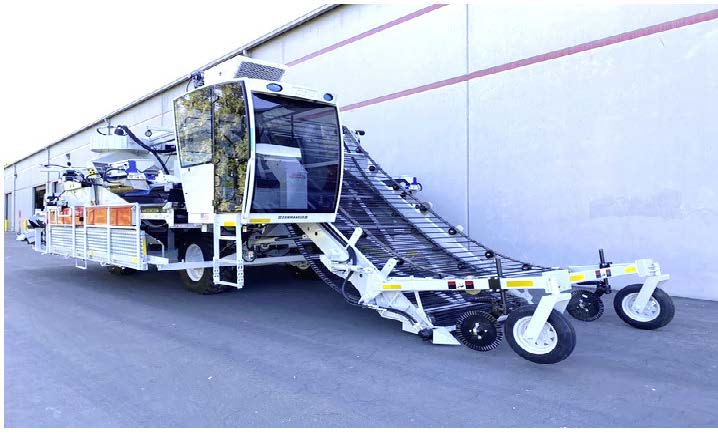
Exhibit 1. A tomato harvester machine (similar model, not actual used in incident). Photo courtesy Westside Equipment.
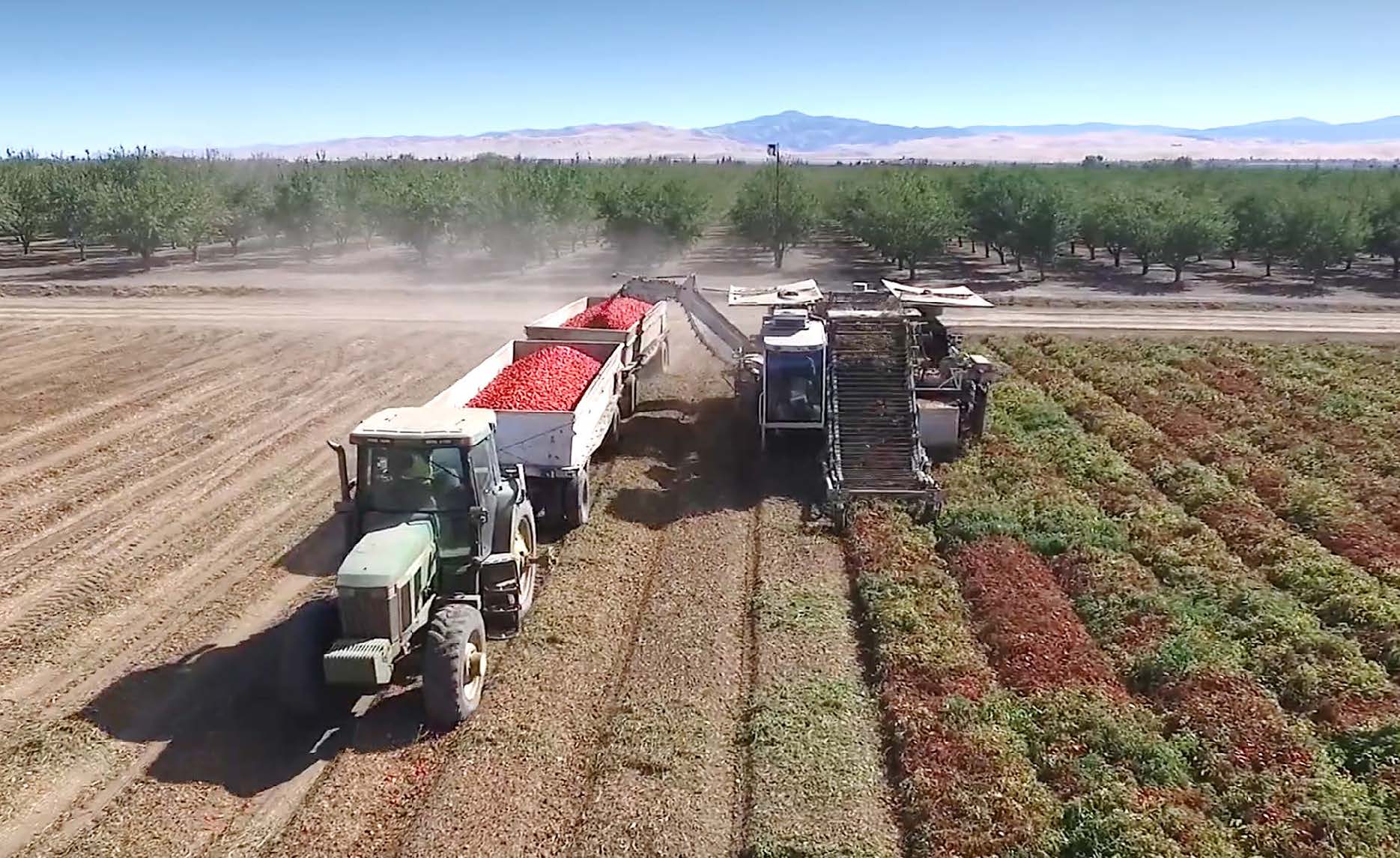
Exhibit 2. A tomato harvester (on right) during the harvesting process. Photo courtesy Westside Equipment.
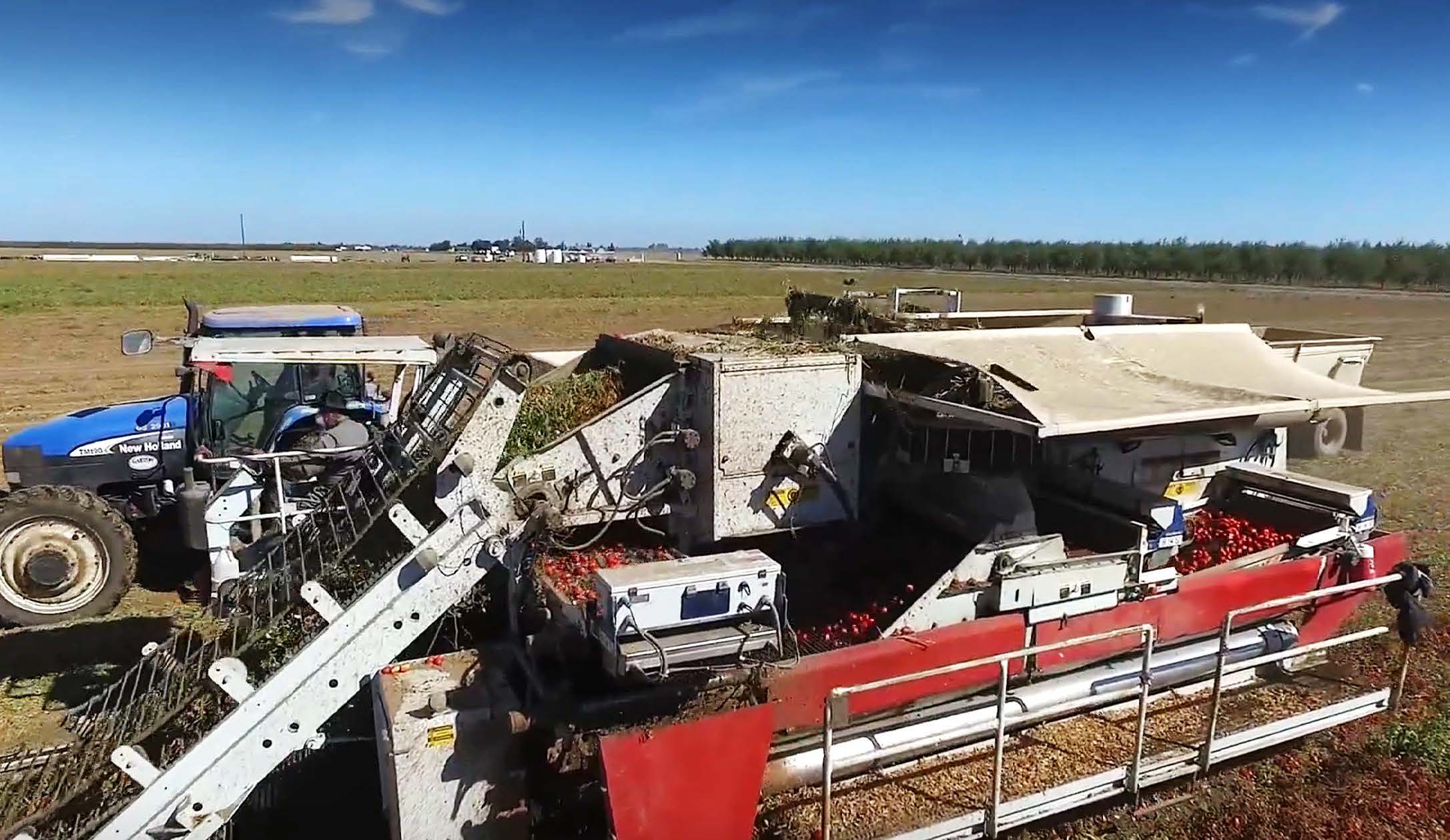
Exhibit 3. Close-up of a tomato harvester during the harvesting process. Photo courtesy Westside Equipment.
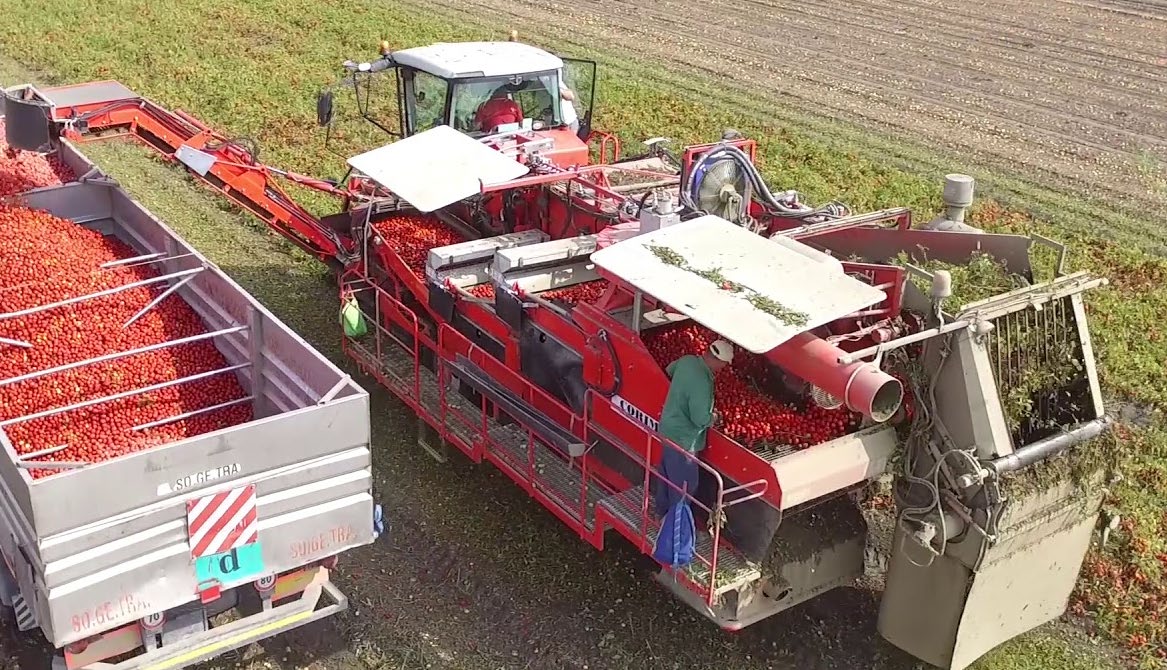
Exhibit 4. Tomato harvester showing sorter’s typical position during harvesting. Photo courtesy corima s.r.l.
Incident Scene
The incident scene was an approximately 150-acre tomato field located in Central California. The crew consisted of one harvester operator and one tractor driver, who were employed by the farmer, and two sorters and an additional tractor driver employed by the labor contractor. When the crew was finished with their shift, they drove out of the field (dirt row) onto a north/south dirt road and proceeded to the maintenance area about ¾ of a mile away. The victim’s body was found near the end of a row by the north/south dirt road (Exhibit 5).
Weather
The weather on the day and time of the incident was approximately 58 degrees Fahrenheit, with an easterly average wind speed of less than 3.5 mph and overcast with cloud cover at approximately 7,500 feet [Weather Underground]. The weather is not believed to have been a contributing factor in this incident.
Investigation
The day of the incident was the first time the victim had worked as a sorter. He began work at 6 p.m. (just before dusk) on a nighttime shift where most of the harvesting work was performed in the dark. During the victim’s shift on the night of the incident, sources of light included the headlights from the harvester and adjacent tractors, and minimal lighting over the sorting conveyor (Exhibit 4 shows the sorters’ working position on the platform).
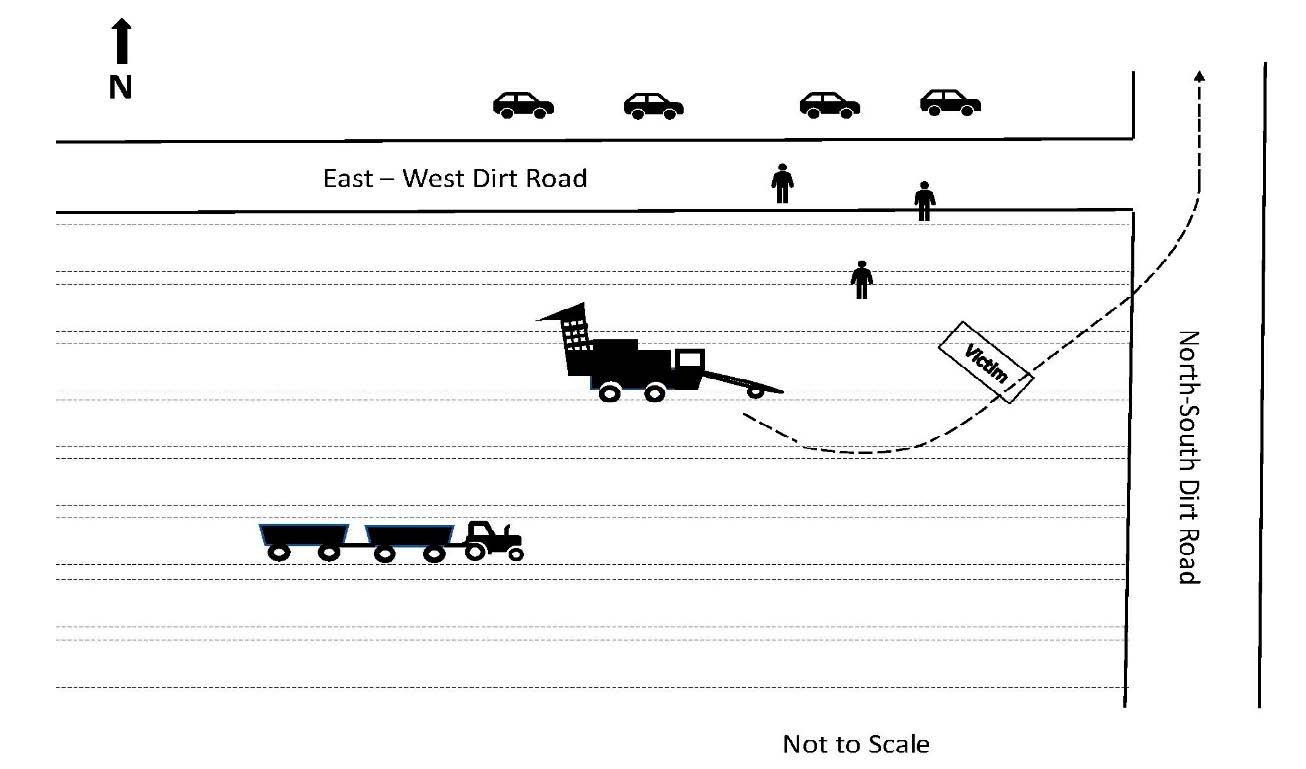
Exhibit 5. The incident scene.
At the beginning of the shift, the operator of the harvester (who was also the farmer’s representative overseeing operations) briefly instructed the farm labor contractor crew on work instructions and expectations. He did not explain safety instructions or conduct an inspection of the equipment, as required under Cal/OSHA standards.
At approximately 4:30 a.m., the harvester operator called a halt to work and told the crew to return to the
maintenance area to clean the harvester prior to ending the shift. The maintenance area was about ¾ of a
mile away, accessible by a dirt road. The crew walked to the edge of the field where their vehicles were
parked, and the harvester operator swung the harvester onto a dirt road that led to the maintenance area
(Exhibit 5).
Shortly after arriving at the maintenance area, the crew noticed that the victim was missing. According to the sheriff’s report, the harvester operator found the victim lying face down in the field unresponsive. Emergency services (911) was called and two paramedics and two officers from the county sheriff’s department arrived on scene. The paramedics attempted to revive the victim, but their efforts were unsuccessful. A medical examiner from the county coroner’s office also arrived on scene and the victim was pronounced dead at 5:31 a.m.
As the incident was not witnessed, it is unknown if the victim was underneath the harvester cleaning debris or was in the field when he was struck and run over by the harvester. The victim may have been relatively unfamiliar with end-of-shift cleaning procedures and may have thought he needed to clean the harvester prior to returning to the maintenance area. If this were the case, the victim would have likely been underneath the harvester removing debris when the operator, not seeing him and assuming he had left the field with the other workers, engaged the harvester, and ran over him. Alternatively, the victim may have been walking in the harvester operator’s blind spot (to the left of the header chain) when he was struck and then run over.
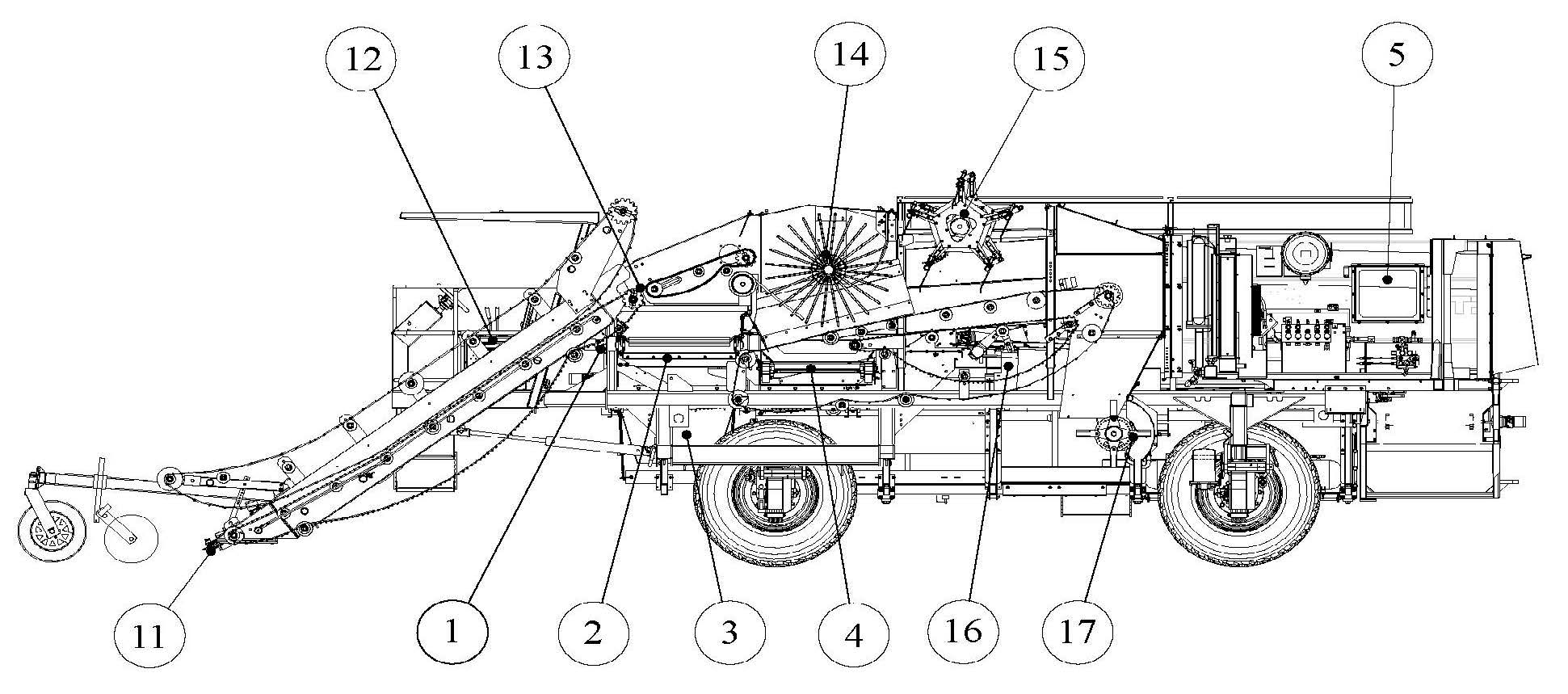
Exhibit 6. Harvester schematic detailing machine cleaning areas.
Illustration courtesy of Westside Equipment Company.
Cause of Death
The county coroner listed the cause of death as multiple blunt force injuries.
Contributing Factors
Occupational injuries and fatalities are often the result of one or more contributing factors or key events in a larger sequence of events that ultimately result in the injury or fatality. CA/FACE investigators identified the following unrecognized hazards as key contributing factors in this incident:
- Inadequate lighting/illumination of the work area for night operations
- Operators and crew not wearing appropriate reflective clothing
- Failure of supervisory personnel to inspect equipment and conduct a safety meeting at the beginning of the shift
- Inadequate communication between operator and crew at beginning and during shift
- No accounting of personnel prior to operation of agricultural equipment
- Inadequate training and instruction related to harvester equipment safety
- Limited line-of-sight for harvester operator
Recommendations/Discussion
CA/FACE investigators concluded that, to help prevent similar occurrences, employers using harvesting equipment should:
Recommendation #1: Provide all employees working at night with appropriate reflective clothing
Discussion: The victim and other employees who were working on the harvester crew did not have reflective clothing. All employees who are working outside performing agricultural operations at night must wear Class 2 high visibility garments. The materials used in these garments are designed to reflect and return a relatively high proportion of light in a direction close to the direction from which it came. High-visibility garments should be included as part of the personal protective equipment (PPE) provided to and used by the employee.
The employer should also ensure that employees are trained on the use, care, and maintenance of the high-visibility garment, including laundering when needed. If the employee had been wearing a high-visibility garment, he might have been more visible to the harvesting machine operator.
Recommendation #2: Supervisory personnel should inspect equipment and conduct a safety meeting at the beginning of the shift.
Discussion: In this incident, the onsite supervisor (harvester operator) failed to conduct a safety meeting at the beginning of the shift with his subordinates and the contract laborers. Beginning-of-shift safety meetings, whether required by OSHA standards or not, are important whenever working around heavy equipment or with contract labor. It is important to communicate hazards that are specific to the process or might be encountered at the worksite. In addition, tomato harvesters, like any self-propelled drivable equipment, should be inspected at the beginning of each shift to ensure that all appropriate safeguards are in place and are functioning properly. Before tomato harvesting, beginning-of-shift safety meetings should, at minimum, address the following:
- The location of the restrooms, drinking water, designated break areas, nearby bodies of water, and high traffic areas
- Required PPE
- Any specific safety instructions or rules
- Potential hazards associated with the process or equipment
- Emergency procedures
- Preferred methods of communication in noisy environments
If the harvester operator had conducted a safety meeting at the beginning of the shift, there may have been increased awareness of the dangers of working at night in the vicinity of the harvester.
Recommendation #3: Develop a Standard Operating Procedure (SOP) that includes a system of communication between operator and crew during the shift as well as a method for accounting of personnel prior to operation of agricultural equipment.
Discussion: While not a specific OSHA requirement for agricultural equipment, many operators of inherently hazardous equipment (e.g., cranes, excavators, dump trucks, forklifts) utilize a communication system with a spotter, especially if the operator has limited visibility due to obstructions or low-light conditions. Given that the operator of the tomato harvester will inevitably encounter conditions of limited visibility while operating at night or in a dusty environment, an SOP for harvester use should include:
- Written instruction for equipment that details start-up procedures, field adjustments, safety requirements, cleaning and maintenance protocols and steps to be taken for emergency shut down
- The SOP should define circumstances (e.g., low visibility conditions) where a spotter is required prior to moving the harvester and define how the spotter will communicate with the operator (e.g., hand signals, hand-held radio)
- Everyone who is expected to operate the harvester should be trained on the SOP prior to assignment and annually thereafter
- The SOP should be reviewed periodically (such as every year or two) and updated as needed
If an SOP regarding the movement of the harvester had been in place, the harvester operator may have been aware that all personnel on the ground had not been identified as he was returning to the maintenance facility.
Recommendation #4: Develop a Standard Operating Procedure (SOP) that includes a system of communication between operator and crew during the shift as well as a method for accounting of personnel prior to operation of agricultural equipment.
Discussion: As the tomato harvester is an inherently hazardous piece of equipment, anyone working with this equipment, whether an operator, maintenance person, or sorter, should receive training prior to assignment and annually thereafter, preferably at the onset of tomato harvesting season. All training should be documented and address at least the following:
- Any SOP requirements
- Signaling and communicating with the operator
- Required PPE
- Lockout/tagout and machine guarding
- Emergency procedures
In addition, as it often takes time and experience to get accustomed to complex equipment, personnel who are new and/or inexperienced with harvesters or other dangerous types of agricultural equipment should be limited to daytime shifts (where visibility and subsequently hazard recognition is significantly better) until they become sufficiently familiar with the equipment. If the contractor personnel had received training on the hazards and work procedures associated with the tomato harvester, this incident may have been prevented.
Recommendation #5: Consider conducting industrial hygiene sampling for dust and noise.
Discussion: As mentioned earlier, tomato harvester operations generate a significant amount of noise and dust. OSHA has established Permissible Exposure Limits (PEL) for noise and airborne chemicals and dust8that are based on an 8-hour Time Weighted Average (TWA), although the shifts of the operators and sorters often extend beyond 8 hours. As repeated exposure to high levels of noise and dust can lead to chronic hearing loss and lung disease, respectively, it is important to evaluate employee exposures to determine if the PELs are exceeded and subsequently, if control measures are needed. For noise control, foam ear plugs are relatively inexpensive and agricultural operations are exempt, both by Federal OSHA and in California, from the audiometric testing requirements of the hearing conservation standard that apply to other industries.
Regarding dust exposure, the controls are dependent on the airborne concentration: for total dust, the PEL is 10 milligrams per cubic meter of air (mg/M3). If the concentration is below the PEL, a simple dust mask could be worn for comfort. If the PEL is exceeded, an N95 or higher rated particulate mask should be worn. In the case where the PEL is exceeded, the employer would also be required to implement a written respiratory protection program, which includes a medical evaluation, fit testing, and training.
CA/FACE investigators concluded that, to help prevent similar occurrences, manufacturers should:
Recommendation #6: Offer high-intensity LED lighting as an option on all tomato harvesters
Discussion: In this incident, the lighting on the harvester was limited to the headlights in the front of the cab and in the sorting area. This lighting provided insufficient illumination for agricultural operation tasks or for maintenance work on equipment at night. Cal/OSHA requires a minimum of 10 to 20 foot-candles for specific tasks. There should be at least five foot-candles of lighting in the vicinity of the harvester when employees may be standing or working nearby. A table from the Cal/OSHA standard that lists illumination requirements can be found in Appendix 1.
The most straightforward approach to increasing the illumination levels is to mount LED lighting on the front and sides of the harvester, which can provide better visibility for both the operator and the tractor drivers operating near the harvester. Portable lighting can also be used for workers to perform cleaning tasks on or underneath the harvester. If the harvester had adequate lighting to illuminate the surrounding area, including underneath the machine, the operator may have seen the victim.
Recommendation #7: Improve visibility for the harvester operator.
Discussion: In this incident, a dusty windshield and insufficient lighting likely contributed to limited visibility of the harvester operator. This harvester had wired remote cameras installed, but the cameras were directed at the harvester’s process conveyors to identify any machinery issues. For harvesting operations occurring at night, the employer can request that the manufacturer of the tomato harvester install the following modifications in addition to LED lighting:
-
Windshield wipers and washers with a reservoir having the capacity to clean the windows 4–5 times per hour over a 10-hour shift, or onboard washer refill storage
- Side mirrors so that the operator can see both the sorters and blind spots on either side of the harvester
- Wired remote cameras so that the operator can see both the sorters and blind spots on either side of the harvester
Were these additional modifications installed, the harvester operator may have been able to see the victim and prevented this incident.
Disclaimer
Mention of any company or product does not constitute endorsement by California FACE and the National Institute for Occupational Safety and Health (NIOSH). In addition, citations to websites external to California FACE and NIOSH do not constitute NIOSH endorsement of the sponsoring organizations or their programs or products. Furthermore, California FACE and NIOSH are not responsible for the content of these websites. All web addresses referenced in this document were accessible as of the publication date.
References
Cal/OSHA [1983] T8CCR §5096.
Exposure Limits for Noise. Oakland, California. Cal/OSHA / Division of Occupational Safety and Health.
Department of Energy [2022].
LED lighting Washington, DC: U.S. Department of Energy.
Investigator Information
This investigation was conducted and authored by Robert Kleinerman, MPH, CIH, Fatality Investigator/ Consultant. Additional contributions to the report were provided by Robert Harrison, MD, MPH, CDPH FACE Project Officer; Laura Styles, MPH, FACE Research Scientist; Jacqueline Chan, MPH, CDPH Industrial Hygienist; and Glenn Shor, PhD, Cal/OSHA CFOI Program.